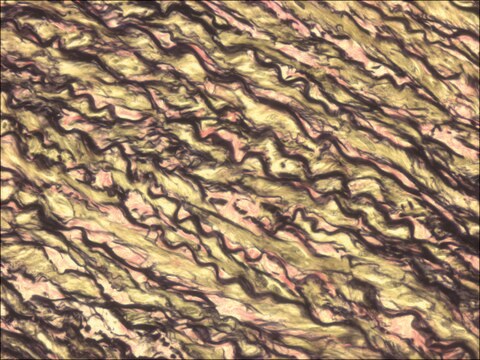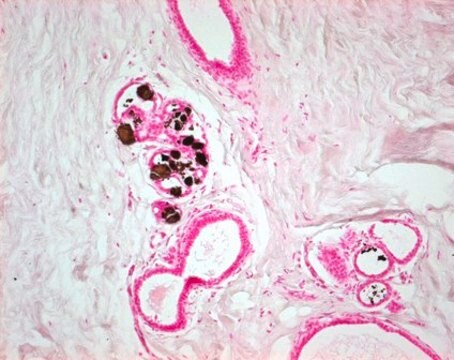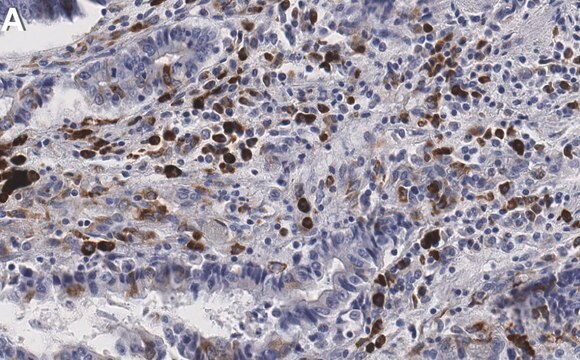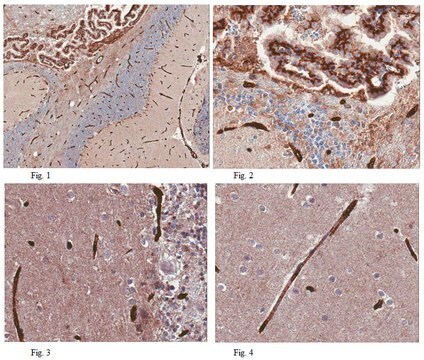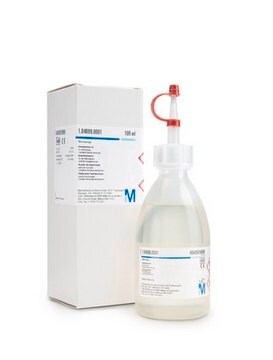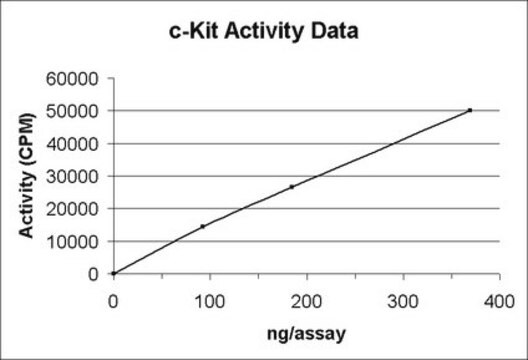17-10098
ChIPAb+ Białko wiążące TATA (TBP) - przeciwciało i zestaw primerów zweryfikowane pod kątem ChIP
ascites fluid, from mouse
Synonim(y):
TATA BINDING PROTEIN, białko wiążące TATA-box, czynnik TATA-box, czynnik wiążący TATA, białko wiążące sekwencję TATA, czynnik inicjacji transkrypcji TFIID podjednostka TBP
About This Item
Polecane produkty
pochodzenie biologiczne
mouse
Poziom jakości
forma przeciwciała
ascites fluid
klon
monoclonal
reaktywność gatunkowa
human, zebrafish, mouse, Xenopus, chicken, fish
spodziewany brak reakcji z
Drosophila
producent / nazwa handlowa
ChIPAb+
Upstate®
metody
ChIP: suitable
immunoprecipitation (IP): suitable
western blot: suitable
izotyp
IgG1
numer dostępu NCBI
numer dostępu UniProt
Warunki transportu
dry ice
informacje o genach
human ... TBP(6908)
Opis ogólny
Zestaw ChIPAb+ TATA Binding Protein (TBP) zawiera przeciwciało TATA Binding Protein (TBP), mysi wodobrzusze z kontrolą ujemną oraz startery qPCR, które amplifikują region 166 bp ludzkiego promotora GAPDH. Białko wiążące TATA (TBP) i kontrole negatywne są dostarczane w skalowalnym rozmiarze reakcji "na ChIP" i mogą być wykorzystane do funkcjonalnej walidacji wytrącania chromatyny związanej z białkiem wiążącym TATA (TBP).
Specyficzność
Immunogen
Zastosowanie
Sonikowaną chromatynę przygotowaną z komórek HeLa (1 X106 równoważników komórek na IP) poddano immunoprecypitacji chromatyny przy użyciu 2 µL negatywnego wodobrzusza lub 2 µL białka wiążącego anty-TATA (TBP) i zestawu Magna ChIP® G (nr kat. 17-611).
Pomyślna immunoprecypitacja fragmentów DNA związanych z TBP została zweryfikowana przez qPCR przy użyciu starterów ChIP, ludzkiego promotora GAPDH jako locus pozytywnego i starterów kodujących GAPDH jako locus negatywnego (patrz rysunki).
Dane przedstawiono jako procentowy wkład każdej próbki IP w stosunku do chromatyny wejściowej dla każdego amplikonu i próbki ChIP, jak wskazano.
Szczegółowe informacje dotyczące eksperymentu można znaleźć w protokole EZ-Magna ChIP G (nr kat. 17-409) lub EZ-ChIP (nr kat. 17-371).
Analiza Western Blot:
Reprezentatywne dane partii.
Lizaty HeLa rozdzielono za pomocą elektroforezy, przeniesiono na membranę PVDF i wysondowano za pomocą anty-TATA Binding Protein (TBP) (rozcieńczenie 1:1000).
Białka wizualizowano przy użyciu przeciwciała drugorzędowego sprzężonego z HRP i systemu detekcji chemiluminescencji (patrz rysunki).
Immunohistochemia:
Do immunohistochemii użyto rozcieńczenia 1:1,000-1:5,000 poprzedniej partii.
Immunocytochemia:
Do immunocytochemii użyto rozcieńczenia 1:1,000-1:5,000 z poprzedniej partii.
Epigenetics & Nuclear Function
Transcription Factors
Opakowanie
Jakość
Sonicated chromatin prepared from HeLa cells (1 X 106 cell equivalents per IP) were subjected to chromatin immunoprecipitation using 2 µL of either Negative Ascites or 2 µL Anti-TATA Binding Protein (TBP) and the Magna ChIP® G Kit (Cat. # 17-611).
Successful immunoprecipitation of TATA Binding Protein (TBP)-associated DNA fragments was verified by qPCR using ChIP Primers, human GAPDH promoter (Please see figures).
Please refer to the EZ-Magna ChIP G (Cat. # 17-409) or EZ-ChIP (Cat. # 17-371) protocol for experimental details.
Opis wartości docelowych
Postać fizyczna
Negatywny wodobrzusze (mysz). Jedna fiolka zawierająca 50 μL mysiego wodobrzusza z 0,05% azydkiem sodu. Przechowywać w temperaturze -20°C.
Primery ChIP, promotor GAPDH. Jedna fiolka zawierająca 75 μL po 5 μM każdego primera specyficznego dla ludzkiego GAPDH. Przechowywać w temperaturze -20°C.
FOR: TAC TAG CGG TTT TAC GGG CG
REV: TCG AAC AGG AGC AGA GAG CGA
Przechowywanie i stabilność
Komentarz do analizy
Zawiera mysie wodobrzusze kontroli ujemnej i startery specyficzne dla ludzkiego promotora GAPDH.
Informacje prawne
Oświadczenie o zrzeczeniu się odpowiedzialności
Kod klasy składowania
10 - Combustible liquids
Certyfikaty analizy (CoA)
Poszukaj Certyfikaty analizy (CoA), wpisując numer partii/serii produktów. Numery serii i partii można znaleźć na etykiecie produktu po słowach „seria” lub „partia”.
Masz już ten produkt?
Dokumenty związane z niedawno zakupionymi produktami zostały zamieszczone w Bibliotece dokumentów.
Nasz zespół naukowców ma doświadczenie we wszystkich obszarach badań, w tym w naukach przyrodniczych, materiałoznawstwie, syntezie chemicznej, chromatografii, analityce i wielu innych dziedzinach.
Skontaktuj się z zespołem ds. pomocy technicznej
